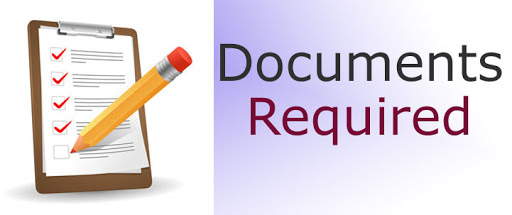- By TOP CHINA FREIGHT
- September 22, 2025
- Rail Freight, Shipping
Table of Contents
Rail freight from China to UK has become one of the most popular choices for businesses that want faster transit times than sea freight but lower costs than air freight. Many importers are now turning to this option to balance speed, price, and reliability in their supply chains. This guide explains costs, transit schedules, customs, and practical techniques to make rail freight smooth and efficient.

What makes rail freight from China to UK a good option?
1.Balanced transit time:
Sea freight is cheapest but takes over 35 days; air freight is fastest, only a few days, but very costly. Rail freight takes 16–22 days, offering a faster and more affordable middle ground.
2.Expanded network:
The Belt and Road Initiative has greatly expanded the rail freight network over the last decade.
3.Key departure hubs:
Trains leave from Chongqing, Yiwu, Wuhan, and other cities, connecting to European hubs like Duisburg, Hamburg, and finally London.
4.Ideal cargo types:
Electronics, textiles, machinery, and consumer goods.
5.Main advantages:
Predictable schedules, competitive pricing, and lower carbon emissions compared to air freight.
How long does rail freight from China to UK take?
Transit time is one of the biggest advantages of rail freight. Depending on the route, it usually takes 16 to 22 days. The difference comes from the departure city in China, customs inspections at borders, and final delivery arrangements in the UK.
| Origin in China | Destination in UK | Average Transit Time | Notes |
|---|---|---|---|
| Chongqing | London | 18–20 days | Direct route via Kazakhstan and Poland |
| Yiwu | London | 20–22 days | Slightly longer due to additional stops |
| Wuhan | London | 16–18 days | Fastest route with fewer border delays |
| Zhengzhou | London | 18–21 days | Stable schedule with weekly departures |
Compared to sea freight, which often exceeds 35 days, rail freight is significantly faster.
How much does rail freight from China to UK cost?

Rail freight costs depend on cargo type, weight, container size, and delivery arrangements. On average, shipping a 40ft container by rail freight costs between USD 8,000 and USD 12,000, which is higher than sea freight but less than half the cost of air freight for the same load.
| Shipping Method | Average Cost (40ft Container) | Average Transit Time | Pros | Cons |
|---|---|---|---|---|
| Sea Freight | USD 5,000–7,000 | 35–40 days | Cheapest, large capacity | Slow, weather delays |
| Rail Freight | USD 8,000–12,000 | 16–22 days | Faster, eco-friendly, cost-effective | Limited routes |
| Air Freight | USD 25,000–35,000 | 3–7 days | Fastest, ideal for urgent goods | Expensive, weight restrictions |
For smaller shipments, Less-than-Container-Load (LCL) rail freight is also available. This option allows businesses to share space in a container, reducing overall costs while still benefiting from shorter transit times.
What goods are suitable for rail freight from China to UK?
- Electronics and consumer goods (e.g., laptops, phones, appliances).
- Textiles and garments that need timely delivery to retailers.
- Machinery and spare parts.
- Automotive products.
- E-commerce cargo requiring reliable delivery schedules.
However, perishable items or temperature-sensitive products may be better suited for air freight, while bulky and non-urgent goods remain cost-effective by sea.
What documents are required for rail freight shipping?

Shipping by rail still requires proper documentation for smooth customs clearance. Missing paperwork can cause long delays at borders.
| Document | Purpose |
|---|---|
| Commercial Invoice | Proof of transaction, shows value of goods |
| Packing List | Detailed contents of shipment |
| Bill of Lading (Rail Waybill) | Contract of carriage |
| Certificate of Origin | Verifies product origin for duties |
| Customs Declarations | Required by both China and UK customs |
| Import Licenses (if applicable) | Needed for restricted goods |
How do customs and duties affect rail freight shipments?
Customs clearance is one of the most important steps when shipping internationally. Goods entering the UK from China are subject to duties, VAT, and potential tariffs depending on product classification.
The process involves:
- Preparing accurate HS codes.
- Submitting declarations at both exit (China) and entry (UK) points.
- Paying applicable duties and VAT.
- Ensuring compliance with UK regulations, such as product safety and labeling.
A common mistake importers make is underestimating customs clearance time. Although rail freight is faster than sea, delays at borders like Kazakhstan–Poland can still add several days.
What are the pros and cons of rail vs sea vs air freight?
| Shipping Method | Pros | Cons |
|---|---|---|
| Rail Freight | Balanced cost and speed, eco-friendly, reliable | Limited capacity compared to sea, affected by border customs |
| Sea Freight | Cheapest for bulk cargo, flexible container options | Long transit, risk of port congestion |
| Air Freight | Fastest, reliable for urgent and high-value cargo | Expensive, strict weight and size limits |
Therefore, the right choice depends on your priorities: if speed is key but budget matters, rail freight is the most suitable.
Can rail freight improve supply chain reliability?
Yes, rail freight strengthens supply chain resilience. With global shipping disruptions such as port congestion and air cargo limitations, rail offers an alternative that avoids dependence on one mode of transport. Moreover, predictable schedules and fixed routes reduce uncertainty, which is vital for retailers and manufacturers with strict delivery deadlines.
Many businesses adopt a multimodal strategy, combining sea, rail, and air depending on product type and urgency. This hybrid approach ensures flexibility and reduces risk.
Case Study: How one UK retailer benefited from rail freight

A UK-based electronics retailer importing tablets from Shenzhen faced long delays due to congested sea ports. Switching to rail freight reduced transit time from 38 days to 19 days. Although the cost was about 30% higher than sea freight, the faster delivery allowed the retailer to launch products earlier, increasing sales and improving customer satisfaction. Additionally, the company reduced its reliance on costly air freight, striking a better balance between cost and delivery speed.
Should you choose rail freight for your business?
If your products require faster delivery than sea freight but do not justify the high expense of air freight, rail freight is an excellent choice. It offers predictable delivery schedules, reasonable costs, and a greener footprint. However, if your cargo is bulky and non-urgent, sea freight may remain more cost-effective. On the other hand, highly urgent and perishable shipments should go by air.
Conclusion
Rail freight from China to UK is a practical solution that bridges the gap between sea and air transport. With average transit times of 16–22 days, competitive costs, and reliable schedules, it supports businesses seeking efficiency in global trade. While customs, duties, and documentation must be managed carefully, the benefits of speed and predictability make it a valuable shipping method. For companies balancing cost, delivery, and sustainability, rail freight provides a strong advantage.
Need a Shipping Quote?
If you want expert guidance and peace of mind, our team is ready to assist.
TJ China Freight offers tailored solutions to help businesses of all sizes ship more reliably from China.

FAQ
Q1:Is rail freight cheaper than air freight?
Yes, rail freight costs less than air but is faster than sea freight, making it a balanced option.
Q2:Do I need special documents for rail freight?
Basic documents include commercial invoice, packing list, bill of lading, and customs declaration.
Q3:What happens if customs delays occur?
Customs inspections may add 1–3 days. A reliable forwarder helps minimize risks.
Q4:Can rail freight handle full containers and LCL cargo?
Yes, both FCL and LCL options are available depending on shipment size.
Q5:Is rail freight reliable for delivery schedules?
Generally yes, trains operate on fixed timetables with stable transit times.
